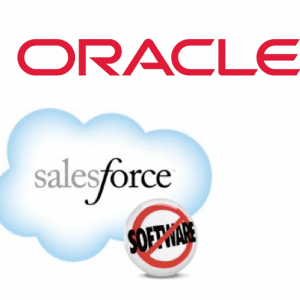Topics
Are Channel Incentive Programs Leaving Sales On The Table?

Most vendors are falling short in their partner engagement strategies, leading to lost sales opportunities, according to research from parago, a rewards-based incentives company that designs, implements and manages programs for the channel.
Specifically, lead generation and deal registration strategies are not as successful as they should be, according to respondents, because they are still using manual processes to manage them. In fact, 80% of channel incentives management is done internally and manually, with vendors using spreadsheets and other systems that are not robust enough to support long-term partner engagement.
Most (74%) vendors said they would like to implement more complex incentives that extend beyond rewarding partners for sales, according to the report, titled: Cut Through The Complexity: Smarter Incentives Drive Results. Although respondents had an interest in motivating channel partners by incenting sales-driving behaviors such as lead generation, deal registration, MDF, training and business planning, they don’t have the bandwidth or the tools to do so. Currently, only 10% of vendors incent on channel partner behaviors aside from total sales.
Among other key findings, the report concluded that although the channel is in the midst of evolving to the cloud, only 39% of vendors have implemented a recurring revenue model for partners.
In the below Q&A, Dan Hawtof, VP of Business Solutions, Global Channel, at parago, discussed key findings from the survey, and how vendors can start moving towards more cutting-edge and profitable incentive programs.
Channel Marketer Report (CMR): Of the key findings, your survey noted that there is an extreme gap between partner engagement activity importance and success. Why do you think this is?
Hawtof: The items that have the biggest gaps are behavioral. Today, these sales-driving activities are being “requested” without being incented or truly promoted. Without promotions, incentives and reasons to repeat these behaviors, channel partners will not develop new habits or increase loyalty to a particular vendor.
CMR: How can vendors tackle this “engagement gap”?
Hawtof: The channel is consolidating. Therefore, partners are demanding additional and more relevant incentives, offers and programs. Many vendors — that are stuck in the “incent only the sale” mentality — are struggling to drive true engagement. For better and stronger relationships, vendors need to recognize and incent a wide array of sales-driving and brand-loyalty behaviors (including, but not limited to, lead generation, deal registration and business planning) when they result in sales.
CMR: Why do you believe so many channel players are still relying on manual processes rather than exploring new tools and solutions?
Hawtof: Many companies have created a cobbled-together platform, typically due to organic growth, acquisition or a siloed internal organization. As the channel has become more complex and competitive, vendors need a consolidated platform that includes a true database. Currently, very few companies have a consolidated platform, so manual data management is still a necessary evil.
CMR: As the channel ecosystem becomes more complex, have you seen vendors become more eager to explore and implement solutions?
Hawtof: Yes, there is a deeper desire to gather data and deliver relevant experiences. As the channel evolves to cloud and hybrid models, it is imperative to deliver differentiated solutions to partners, including concierge marketing, Through Partner Automation, interactive learning and complex incentives.
CMR: How would you describe the current state of incentives? What challenges are vendors facing in creating targeted and highly relevant programs?
Hawtof: Incentives are more important than ever. However, with the increasing complexity and competition, the biggest challenge is incenting the right behavior with the right partner. These more effective channel strategies are almost impossible to implement with manual processes and legacy platforms, especially if a vendor wants to target narrow partner profiles and hone incentive strategies based on reporting insights.
CMR: What best practices can you provide to vendors regarding their incentive programs?
Hawtof: Simply put, vendors should analyze their most successful partners and understand which of their behaviors indicate good partnership. Create smart levers to drive those behaviors in other partners — when they result in sales, of course. Examine what’s really working for you and strive to replicate it.
CMR: Do you believe MDF and co-op programs are still valuable to partner loyalty and overall sales success? How must they evolve to become more relevant?
Hawtof: MDF and co-op programs are still valuable. The best programs don’t just hand over the funds; instead, vendors should help design and implement them to maximize success. Without in-house marketing expertise — a common channel partner reality — MDF and co-op dollars are not being used as effectively as possible.
Click here to access the complete report from parago.














